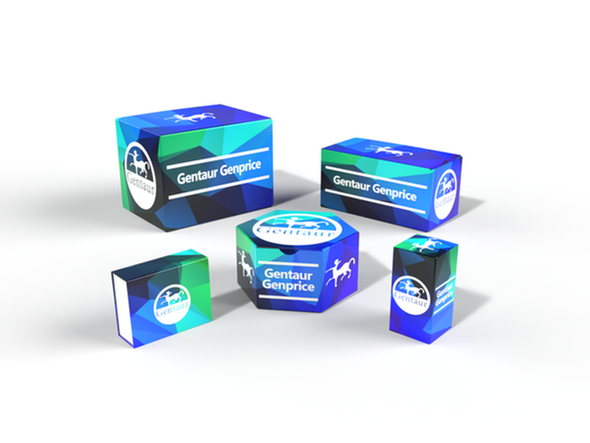Description
TLR9 Antibody | 3737 | Gentaur UK, US & Europe Distribution
Host: Rabbit
Reactivity: Human, Mouse
Homology: Predicted species reactivity based on immunogen sequence: Pig: (81%) , Bovine: (100%) , Sheep: (100%)
Immunogen: TLR9 antibody was raised against a peptide corresponding to 16 amino acids near the carboxy terminus of human TLR9.
The immunogen is located within amino acids 960 - 1010 of TLR9.
Research Area: Signal Transduction, Innate Immunity
Tested Application: E, WB, IHC-P, IF
Application: TLR9 antibody can be used for detection of TLR9 by Western blot at 0.5 to 1 μg/mL. Antibody can also be used for immunohistochemistry starting at 2 μg/mL. For immunofluorescence start at 10 μg/mL.
Antibody validated: Western Blot in mouse samples; Immunohistochemistry in mouse samples and Immunofluorescence in mouse samples. All other applications and species not yet tested.
Specificiy: N/A
Positive Control 1: Cat. No. 1406 - Mouse Spleen Tissue Lysate
Positive Control 2: N/A
Positive Control 3: N/A
Positive Control 4: N/A
Positive Control 5: N/A
Positive Control 6: N/A
Molecular Weight: N/A
Validation: N/A
Isoform: N/A
Purification: TLR9 Antibody is affinity chromatography purified via peptide column.
Clonality: Polyclonal
Clone: N/A
Isotype: IgG
Conjugate: Unconjugated
Physical State: Liquid
Buffer: TLR9 Antibody is supplied in PBS containing 0.02% sodium azide.
Concentration: 1 mg/mL
Storage Condition: TLR9 antibody can be stored at 4˚C for three months and -20˚C, stable for up to one year. As with all antibodies care should be taken to avoid repeated freeze thaw cycles. Antibodies should not be exposed to prolonged high temperatures.
Alternate Name: TLR9 Antibody: CD289, Toll-like receptor 9
User Note: Optimal dilutions for each application to be determined by the researcher.
BACKGROUND: TLR9 Antibody: Toll-like receptors (TLRs) are evolutionarily conserved pattern-recognition molecules resembling the toll proteins that mediate antimicrobial responses in Drosophila. These proteins recognize different microbial products during infection and serve as an important link between the innate and adaptive immune responses. TLR9 forms a subfamily along with TLR7 and TLR8 that recognize viral RNA and CpG DNA sequences and are localized in intracellular acidic compartments such as the phagolysosome. Unlike other TLRs which act through adaptor molecules such as TOLLIP, TIRAP, TRIF, and MyD88 to activate various kinases and transcription factors to respond to potential infection, TLR9 is strictly dependent on MyD88.






